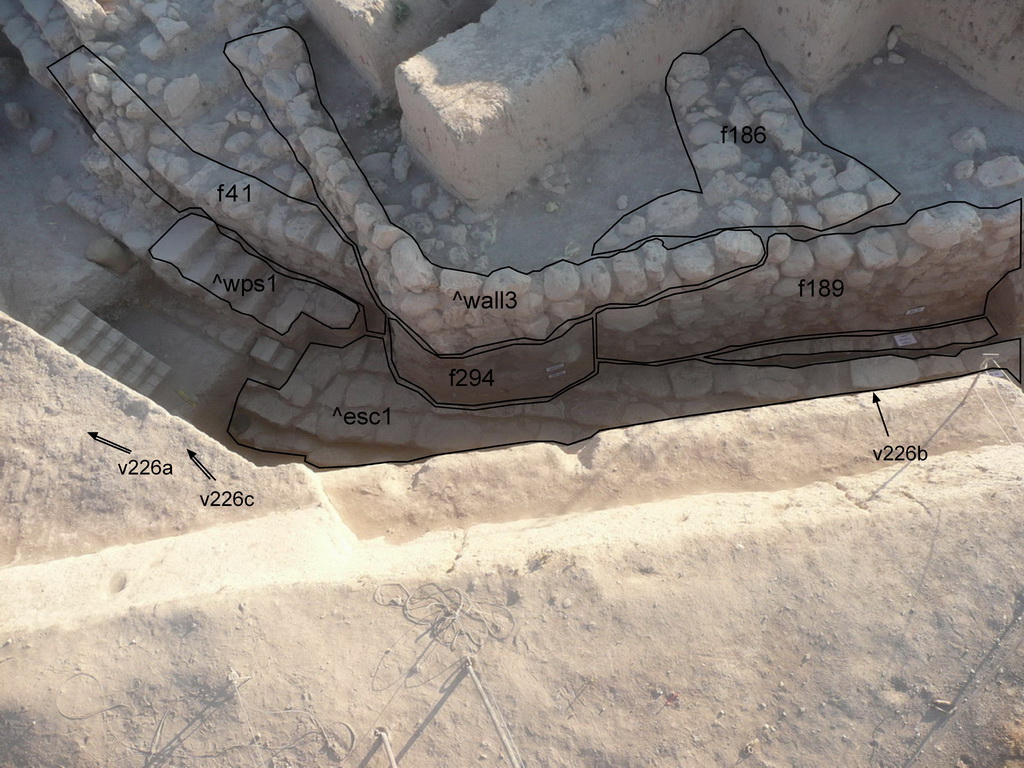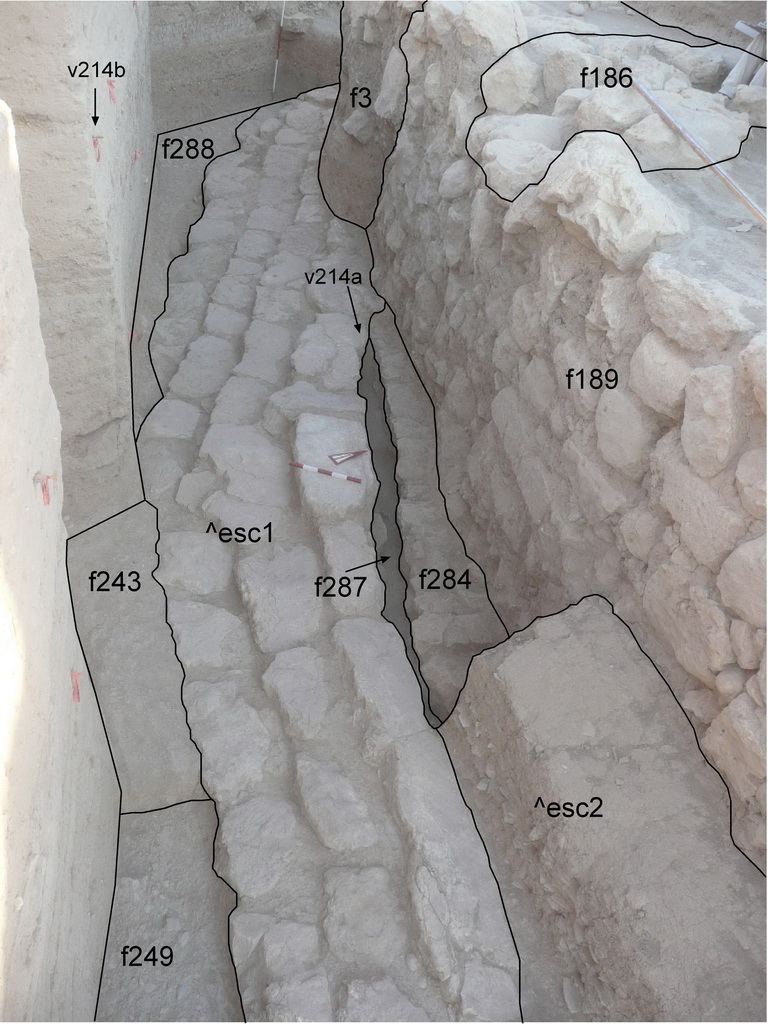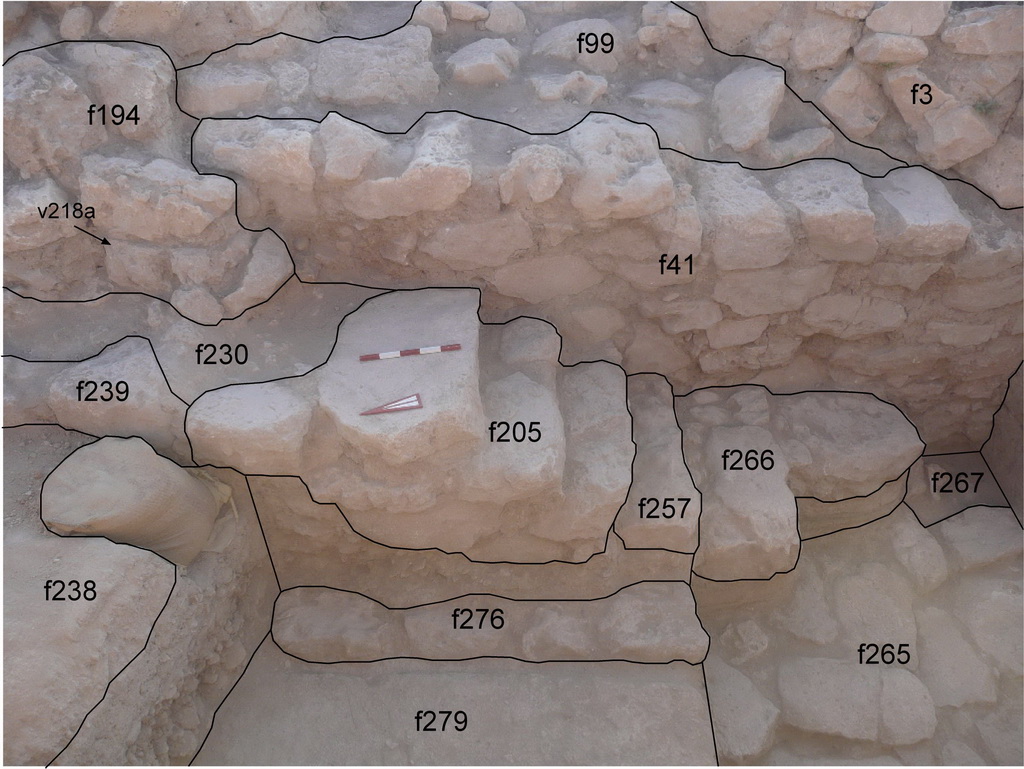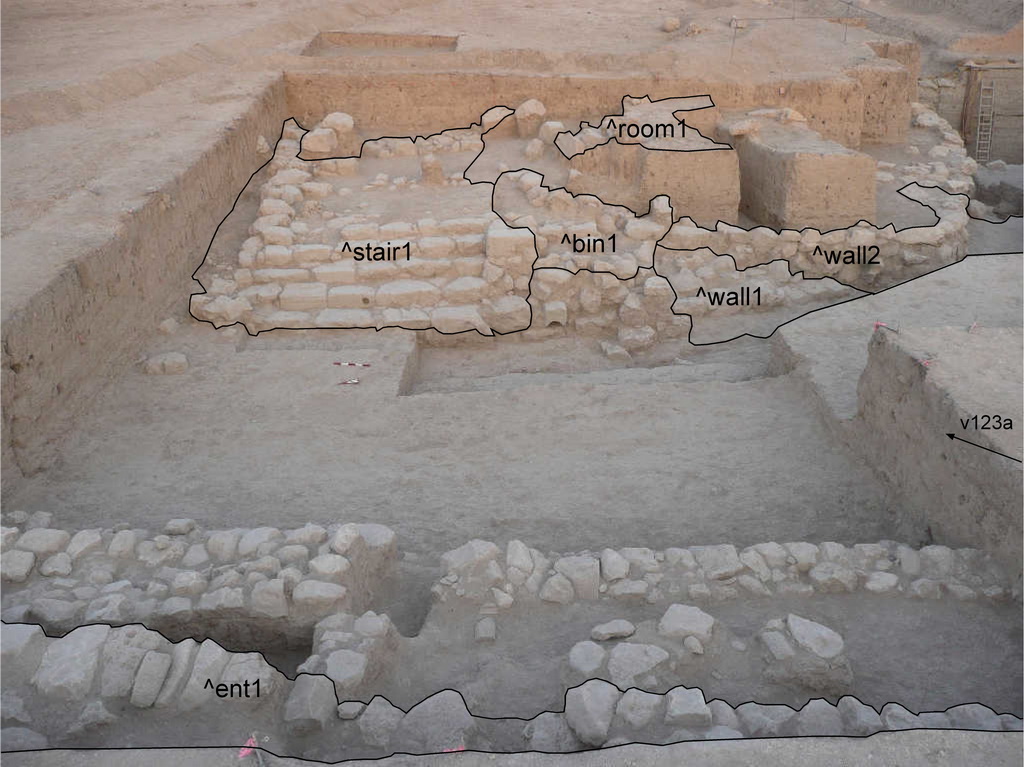Back to top: Ordered aggregation
Introduction
Architecture, mostly of stone and much of it monumental, comprises the
ordered aggregation category. Revetment walls were built during both the Early Dynastic period and late in the Mittani period. A monumental stairway to the BA temple was constructed during the shift westward of the access to it. A variety of lesser structures were built to perform such practical functions as diverting water away from the revetment walls.
Back to top: Ordered aggregation
Walls
At least three different revetment wall systems were constructed in approximately the same location.
The first, ^wall1 where we only observe the wall top, was probably built before the Early Dynastic period.
The most extensive construction in this excavation unit occurred during the Early Dynastic Period when a major stone revetment wall was built to separate the BA Temple mound from the rest of the settlement ^wall2. There are several sections, f41 and f189, that were built at separate times, perhaps as the result of water damage.
A third, less complex wall, ^wall3 was built during the western expansion to accompany the access staircase, ^strc1.
|
|

|
Back to top: Ordered aggregation
Glacis and Escarpments
Based on excavations of nearby units, we know that the Early Dynastic period revetment walls were protected from erosion at the base by escarpments and from erosion at the top by glacis.
Two separate escarpments were built to protect the Early Dynastic period revetment wall, ^wall2. The earliest, a stone structure ^esc1, protected the base of wall f41. The second, was made of a mixture of baqaya and sherds ^esc2 laid atop the first escarpment. It protected the reconstructed part eastern part of the revetment wall, f189.
Only one small portion of the glacis, f185, which protected the Early Dynastic wall system is visible. It was inadvertently excavated during the early efforts to locate the wall-top.
|
|

|
Back to top: Ordered aggregation
Stairways
|
Two sets of stone stairs have been excavated. The earlier, ^strc2 provides access from the bottom of the revetment wall to the top and was built early in the Mittani period.
|
|

|
|
By late in the Mittani period, the eastern formal monumental access to the BA temple mound had been covered by accumulations and brickfall. At this point, access to the Temple was moved from the East (J2) to a higher elevation and to the West (J5), where a smaller staircase was built ^strc1.
|
|

|
Back to top: Ordered aggregation
Complex installations
Installation of stone and mudbrick were built for a variety of reasons. An important one was the control of water erosion along the outside perimeter of the revetment wall. Notable are the mudbrick dam ^eps1 built early in the Mittani period and a rough stone weir ^eps2 built late in the Mittani period.
Other installations include lines of stones to separate sacred and secular spaces, a stone bin, and decorative stonework.
Back to top: Ordered aggregation
Feature List
Most of the ordered constituents discussed in this section have been grouped in combinations called specific labels. It may nevertheless be useful to list the contributing elements by definition:
Back to top: Ordered aggregation